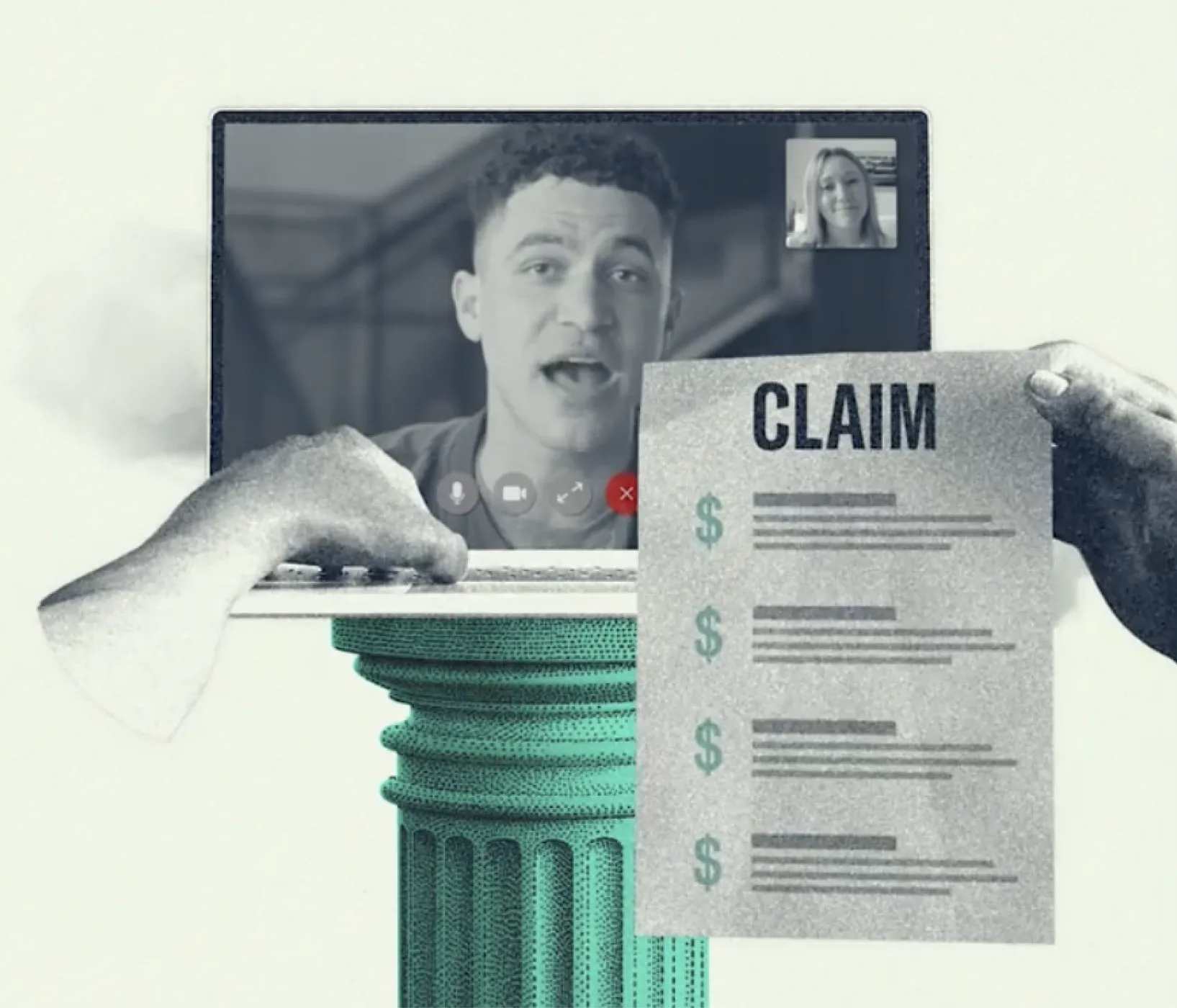Understanding Tech E&O Insurance



When a client relies on your technology and something goes wrong, the financial consequences can be significant. Technology Errors and Omissions (Tech E&O) insurance helps protect your company in incidents of mistakes, system failures, or security gaps. It covers legal costs, settlements, and judgments if your technology product or service causes a client financial loss.
This guide explains what Tech E&O insurance is, what it covers and excludes, who needs it, how pricing works, and what common claim scenarios look like.
What Is Tech E&O Insurance?
Tech E&O insurance, sometimes called technology professional liability insurance, protects businesses when clients claim they experienced financial harm because of an error, omission, or failure in a technology service or product. If a software bug, an integration issue, or a missed project deadline causes a client loss, Tech E&O may cover the cost to defend the claim and pay resulting damages.
Policies are typically written on a claims-made basis, meaning they cover claims reported during the policy term as long as the work took place after the policy’s retroactive date. Many modern Tech E&O policies also include third-party cyber liability coverage, which extends protection if your technology error leads to a client’s data breach.
Tech E&O vs E&O
Errors and Omissions (E&O) insurance and Technology Errors and Omissions (Tech E&O) insurance are similar but aren’t identical. Traditional E&O policies were built for service-based industries like law, accounting, or consulting. Tech E&O evolved to address the unique exposures that arise from technology services and software.
Where a standard E&O policy focuses on professional negligence, Tech E&O extends coverage to failures in code, systems, or digital products. It also often includes third-party cyber coverage, reflecting the way technology and data risks overlap.
In short, all Tech E&O is E&O, but not all E&O is designed for technology companies. Businesses that write, implement, or support software should look into Tech E&O to ensure coverage fits their actual risk profile.
Tech E&O vs Cyber Insurance
While Tech E&O and Cyber insurance are often purchased together, they protect against different risks.
Together, these policies help close gaps between technology performance risk and cybersecurity exposure.
Learn more about different types of business insurance and the protections they offer.
What Tech E&O Insurance Covers
A Tech E&O policy covers a range of professional mistakes and performance issues related to technology services or products. Typical covered events include:
- Errors or system failures that cause client downtime or lost revenue
- Professional negligence, such as incorrect configuration or poor technical advice
- Missed project deadlines or deliverables that create client financial losses
- Breach of contract or warranty for not meeting agreed performance standards
- Accidental infringement of copyright, trademark, or other intellectual property rights
- Third-party data breaches resulting from flaws or vulnerabilities in your product or service
- Employee errors or oversights in performing contracted work
- Legal defense costs, settlements, and judgments for covered claims
What Tech E&O Doesn’t Cover
Tech E&O insurance is designed to protect against professional errors, not every type of loss. Common exclusions include:
- Bodily injury or property damage (covered under General Liability)
- Intentional or fraudulent acts
- Criminal activity and direct regulatory fines
- Employment-related claims, including discrimination or wrongful termination (covered under Employment Practices Liability)
- Cyber events that affect your own systems or data (covered under a standalone Cyber policy)
Learn more about what Tech E&O Insurance covers.
Who Needs Tech E&O Insurance
Any business that builds, delivers, or supports technology for clients should carry Tech E&O coverage. That can include:
- Software and SaaS providers
- IT consultants and managed service providers
- Data, analytics, and AI solution providers
- Fintech, healthtech, and other regulated technology companies
- Ecommerce and platform-based businesses
- Hardware or IoT firms whose devices rely on software
Many enterprise clients now require Tech E&O coverage before signing vendor contracts. Having it in place helps demonstrate reliability and strengthens your company’s risk profile.
How Much Tech E&O Insurance Costs
Premiums for Tech E&O vary by company size, revenue, and exposure. Smaller companies may pay a few hundred dollars per year, while larger or highly regulated businesses may pay several thousand.
Key factors that influence cost include:
- Company size and annual revenue
- Type of technology and industries served
- Claims history or previous legal disputes
- Coverage limits and deductible levels
- Security practices, quality controls, and compliance programs
- Contractual requirements and client size
Strong security protocols, defined QA processes, and regular compliance reviews may help you get lower premiums.
Learn more about how much Tech E&O Insurance costs.
How Much Tech E&O Coverage You Need
The right coverage limit depends on your company’s operations, clients, and contractual obligations. A common starting point is a $1 million per-claim limit, but companies with enterprise clients or regulated operations often carry higher limits.
Think about the following when setting your limits:
- Minimum requirements in client contracts or investor agreements
- The financial impact a worst-case service failure could cause
- Sensitivity of the data you manage
- Your company’s revenue, assets, and risk tolerance
As your company grows or signs larger clients, review your coverage annually to ensure it still reflects your exposure.
A Vouch advisor can help you figure out how much coverage your company needs.
Learn more about how much Tech E&O Insurance you need.
Common Tech E&O Claims Examples
These examples illustrate how Tech E&O coverage may respond to incidents:
- Software failure: A SaaS update includes a bug that takes down a client’s system. The client sues for lost sales.
- Missed deadline: An IT project is delayed, causing the client to incur compliance penalties.
- Security lapse: A misconfiguration exposes client data, leading to legal and regulatory costs.
- Breach of warranty: A technology product fails to meet promised performance benchmarks, disrupting a client’s operations.
- Accidental IP use: A company unknowingly incorporates copyrighted code into its product and faces a lawsuit.
In each case, Tech E&O may cover legal defense and settlements, helping companies manage the financial impact and protect client relationships.
Why Tech E&O Insurance Matters
Technology reliability is a business expectation, not a differentiator. When systems fail or advice falls short, the financial impact on clients can be immediate. Tech E&O insurance converts those unpredictable liabilities into a predictable, manageable expense.
It helps preserve client trust, ensures contract compliance, and provides the confidence to innovate without putting the company’s financial stability at risk.
Frequently Asked Questions
What type of businesses need Tech E&O the most?
Any company that provides technology services or products where clients rely on performance or uptime should consider it.
Does Tech E&O cover data breaches?
Only if your error directly causes a client’s breach. Losses from breaches of your own systems fall under Cyber insurance.
When should a company buy Tech E&O?
Before signing contracts that include performance guarantees or liability clauses. Many clients will require proof of coverage.
How often should coverage be reviewed?
Annually, or when you expand into new services, industries, or client segments.
Can Tech E&O and Cyber coverage be combined?
Yes. Many insurers offer integrated policies that include both, simplifying administration and reducing coverage gaps.
Vouch Specialty Insurance Services, LLC (CA License #6004944) is a licensed insurance producer in states where it conducts business. A complete list of state licenses is available at vouch.us/legal/licenses. Insurance products are underwritten by various insurance carriers, not by Vouch. This material is for informational purposes only and does not create a binding contract or alter policy terms. Coverage availability, terms, and conditions vary by state and are subject to underwriting review and approval.




